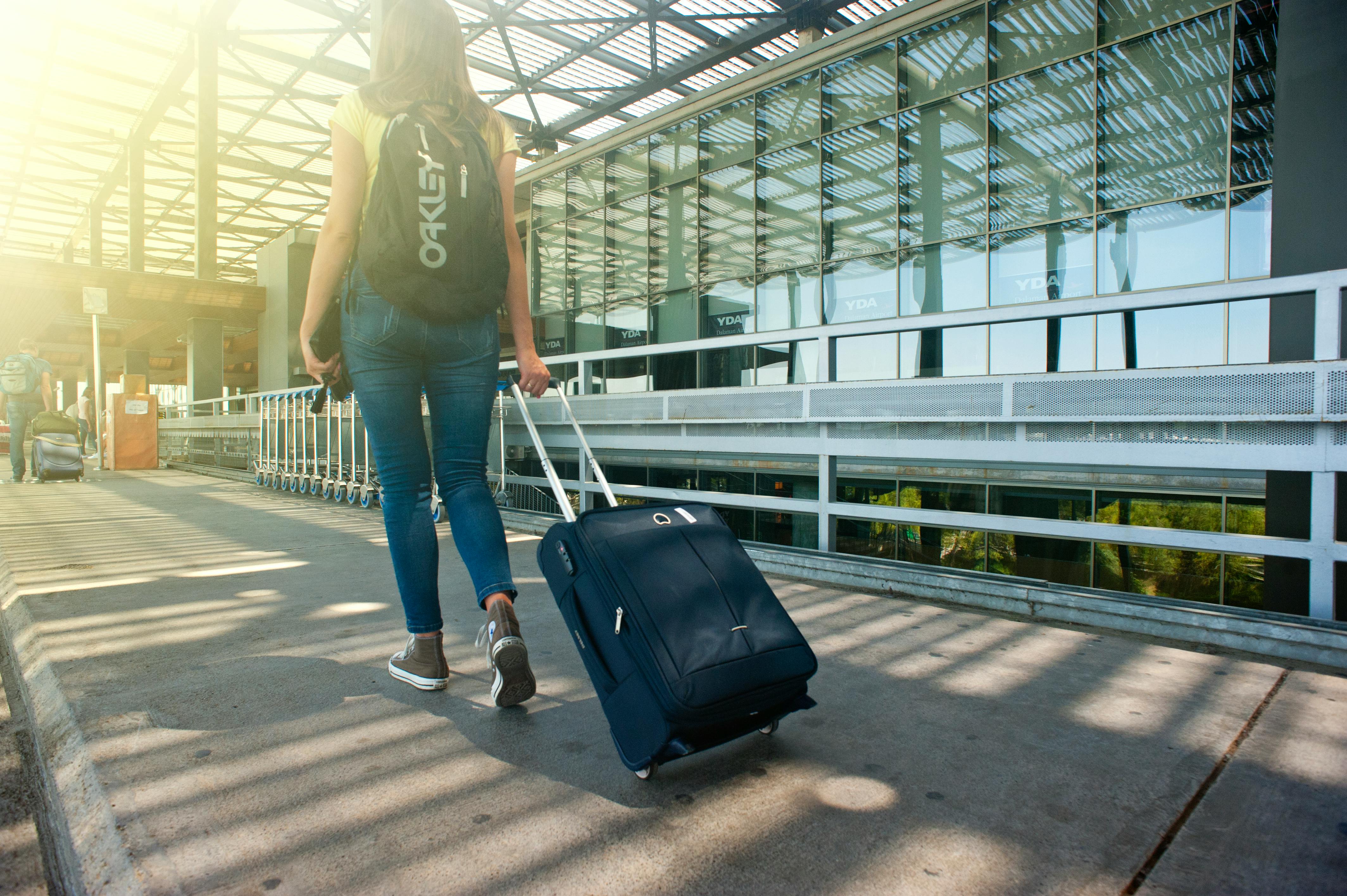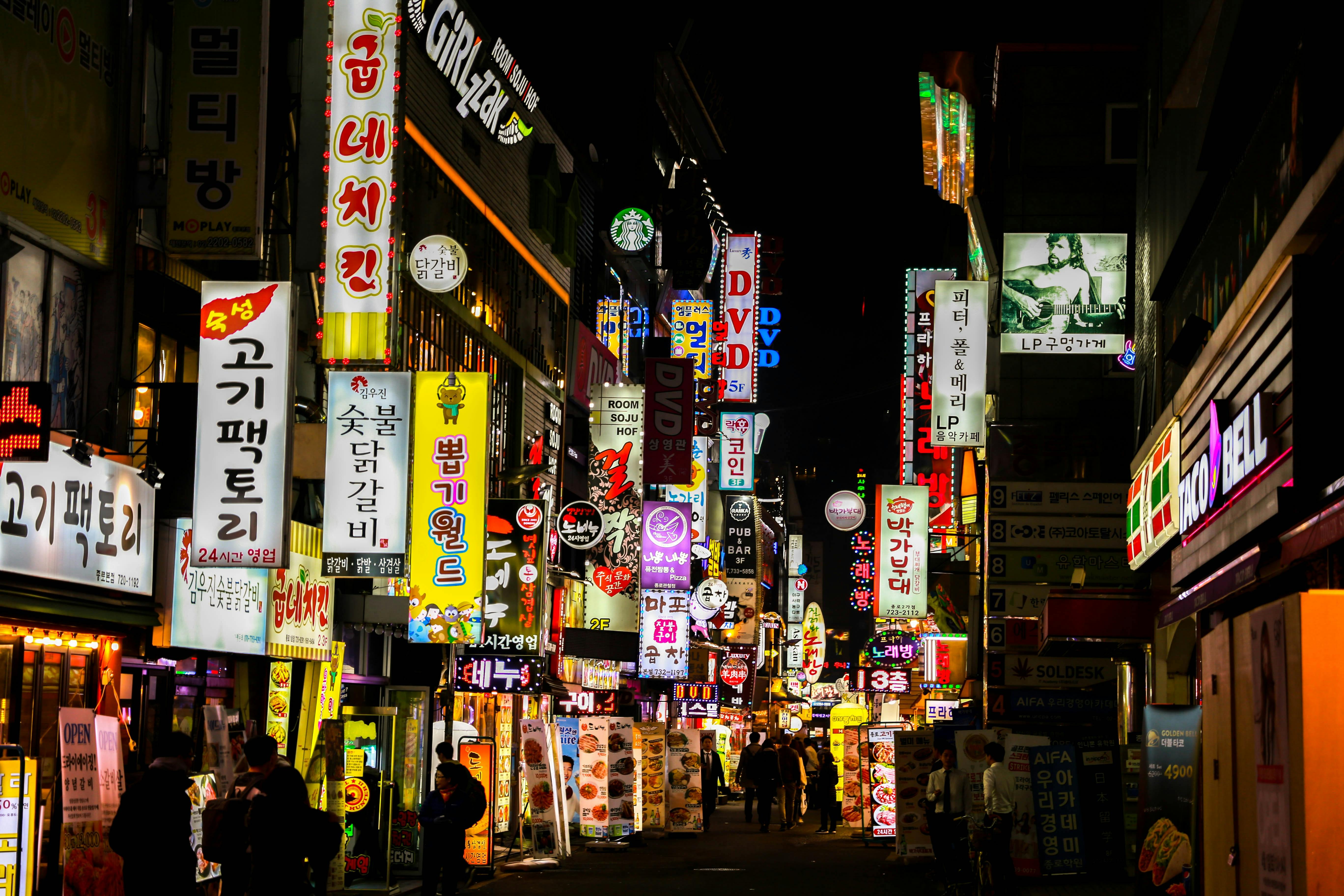June 17, 2025

Traveling to Korea without knowing the language might sound intimidating, but travelers might be surprised to find that they can get by in Seoul with very little English and a few useful apps. Whether you're visiting for a week or a few months, you don’t need to speak Korean to have an amazing, smooth experience. You just need to know how to navigate the landscape smartly.
Here’s everything you need to know to confidently travel Korea without speaking the language.
If you don’t speak Korean, your smartphone is your translator, guide, map, taxi-hailer, food courier, and survival tool all in one. But the key is knowing which apps actually work in Korea, because many global apps are either limited or completely useless here (yes, we’re looking at you, Google Maps).
Here’s a breakdown of the must-download apps every foreign traveler should have before landing in Korea:
Best for: Accurate walking and driving directions
Why it matters: Google Maps has had many improvements and now works well in Korea, but we still recommend Naver Map due to restrictions on mapping data that the government has placed on foreign companies. Naver Map, run by Korea’s version of Google, gives you reliable turn-by-turn directions, even inside buildings like malls and subway stations. English is somewhat supported, but search results often work best if you input the Korean name of the location (in Hangul). Naver Map is extremely popular among Koreans, and you'll often see Korean businesses link to Naver Map on their websites and social media.
Best for: Real-time public transportation info
Why it matters: KakaoMap is excellent for subway and bus routes. It shows estimated arrival times, platform info, and even which subway car is closest to the exit you need. It’s also good for finding places to eat, shop, or visit nearby.
Insider tip: Download both Naver Map and KakaoMap. Sometimes one will find a location the other misses.
Best for: Context-dependent translations and interpreting abbreviations
Why it matters: ChatGPT can handle most translation queries better than dedicated translation apps, but you'll have to have access to the internet to use it. It's not perfect, but it's pretty good!
Best for: Real-time text, voice, and image translation
Why it matters: Papago was built with Korean language nuances in mind. It handles slang, idioms, and restaurant menus far better than Google Translate. You can also take pictures of signs or menus and get an instant translation.
Still useful for very basic translations or cross-checking. But expect weird phrasing and frequent inaccuracies with Korean.
Best for: Booking taxis and checking public transit
Why it matters: Hailing a cab on the street isn’t always easy, especially if you can’t explain your destination. Kakao T lets you enter your pickup/drop-off in English (or paste the Korean name) and get matched with a nearby driver. It’s reliable, cashless, and even works for airport transfers and long-distance taxis.
If you don’t have a Korean phone number or ID, you won’t be able to fully register for Kakao T or use certain in-app payment features. But you still have options, here are the ones that work internationally:
What it is: A joint venture between Uber and T Map, designed to work more smoothly for foreigners.
Why it’s foreigner-friendly:
Pro tip: UT often has fewer cars available than Kakao T, but the experience is smoother for non-Korean users, especially first-timers.
Many upscale or foreigner-focused hotels can call taxis or even book Kakao T for you through their staff accounts, bypassing the ID barrier. If you’re working with a local fixer, interpreter, or concierge-style travel service (like PIN-Agency!), they can handle this too.
Best for: English food ordering
Why it matters: Unlike Korean-only apps like Baemin or Yogiyo, Shuttle was built with foreigners in mind. The interface is fully in English, customer service is responsive, and you can pay with international cards. You’ll find local Korean food and foreign restaurants that deliver in your area. The downside? You're paying higher prices than you would on other apps, and your options will be limited.
It is possible to use some Korean food delivery apps these days as a tourist, if you can navigate the Korean user interface (it can be a bit challenging, you should ask a Korean friend or hotel staff to help you set it up if you are having difficulty). The app’s interface is still 100% Korean, so you’ll need a translation tool for menus and navigation.
Here's a guide to using Baemin (배달의민족) to order food!
You'll have to download the app from the play store and press the button in the bottom-right corner to order as a guest. After that, you should enter your address and any other important information, such as your hotel room number and how you want the food to be delivered.
Once your address is entered, you can go ahead and browse food options and select your order. At the checkout screen, you'll have to select the option to verify with a foreign phone number and enter a foreign credit or debit card.
Even with the best apps, you’ll hit some frustrating walls, from logins requiring Korean phone numbers to restaurant menus with zero English support.
That’s where PIN-Agency Korea comes in.
We help travelers navigate Korea more comfortably, from translation help and itinerary planning to real-world support on the ground. Whether you want a stress-free arrival or a local guide to show you around, we’re here to make your trip memorable and smooth!
→ Learn more about our personalized travel support

Where you stay in Korea can make or break your experience, especially if you don’t speak the language. Booking a cheap guesthouse in the wrong neighborhood might leave you isolated, lost, or just plain frustrated. On the flip side, staying in the right area means:
Here are the top foreigner-friendly neighborhoods to consider:
Historically home to US military and embassies, Itaewon has long been Seoul’s most international district. Known for its diverse food, nightlife, and inclusive atmosphere, it’s popular with expats, solo travelers, and LGBTQ+ visitors. Great for those who want to ease into Korea without full culture shock. Age range: 20s to 40s.
Best for: First-timers, solo travelers, nightlife, international food
Why stay here:
Downsides: Can be noisy and crowded on weekends. Less “authentic” Korean feel.
Centered around Hongik University, this area is a creative, youth-driven zone known for street art, indie music, nightlife, and vintage fashion. You’ll find plenty of cheap eats, themed cafes, and busking performances. It’s chaotic but fun — ideal for students, backpackers, and young couples. Age range: teens to early 30s.
Best for: Young travelers, art lovers, indie vibes, street food
Why stay here:
Downsides: Not all staff speak English, and signs are mostly in Korean, but it’s manageable. Watch out for a whiff of the iconic "Hongdae Smell" wafting from the sewers; it can stink!
Synonymous with Seoul’s modern wealth and style, Gangnam is upscale, clean, and highly developed. Think malls, skyscrapers, plastic surgery clinics, and fine dining. It’s popular with digital nomads, professionals, and upper-class locals, but less “authentically Korean” than old-town neighborhoods. Age range: 30s to 50s, business travelers, K-pop fans (SM and JYP HQ nearby).
Best for: Shopping, digital nomads, modern comforts
Why stay here:
Downsides: More expensive, less “Korean street culture” feel.
Myeongdong: Once the crown jewel of Korean tourism, Myeongdong became world-famous for K-beauty and duty-free shopping. It’s a favorite among first-time visitors, especially from Japan, China, and Southeast Asia. Recently rebounding post-COVID, it offers a safe, clean, and convenient base for sightseeing and shopping. Age range: all ages, especially 20s–40s.
Best for: Shopping, first-time tourists, short stays
Why stay here:
Downsides:

Korea is packed with incredible experiences: night markets, palace tours, temple stays, mountain hikes, traditional cooking classes, K-pop dance workshops, etc... but not all of them are accessible to non-Korean speakers.
The good news? You don’t need to speak Korean to have a rich, immersive experience here — you just need to choose the right platforms and providers.
TripAdvisor: Great for popular tours and user reviews. You’ll find everything from DMZ tours to private cooking classes.
GetYourGuide: Offers curated day trips and experiences across Korea, often with English-speaking guides. A solid option for Seoul, Busan, Jeju, and more.
Klook: Very popular in Asia. Includes attraction tickets, SIM cards, transport, and local activities in English.
These platforms offer English speaking guides and accept international credit cards. But, there is a catch. These platforms take a large cut, usually around 30%, of what you're paying for the experience, for themselves. If you're lucky, you can usually find the experience being offered on the hosting company's private website, and get a large discount on the ticket price. While these platforms are convenient, they mostly focus on mainstream, tourist-heavy experiences. If you’re looking for something more personal or off the beaten path, they’ll come up short.
Alternatively, if you're interested in a more authentic Korean experience, our company can arrange it for you, as well as provide an interpretation services in English! Just DM us on instagram to see how we can help you.

You don’t need to speak fluent Korean to enjoy your trip, but learning a few key survival phrases and cultural habits can drastically improve your experience. Koreans appreciate it when foreigners make even a small effort, and in some cases, these basics can be the difference between being ignored and getting genuine help.
안녕하세요 (Annyeonghaseyo) — Hello
감사합니다 (Gamsahamnida) — Thank you
죄송합니다 (Joesonghamnida) — Sorry / Excuse me
영어 하세요? (Yeongeo haseyo?) — Do you speak English?
이거 얼마예요? (Igeo eolmayeyo?) — How much is this?
화장실 어디예요? (Hwajangsil eodiyeyo?) — Where is the bathroom?
도와주세요 (Dowajuseyo) — Please help me
괜찮아요 (Gwaenchanayo) — It’s okay / I’m fine
맛있어요! (Masisseoyo!) — It’s delicious!
안녕히 계세요 (Annyeonghi gyeseyo) — Goodbye (when you’re leaving)
Korean culture has its own rhythm and unspoken rules. If you want to avoid awkward moments, keep these in mind:
Bowing is a basic greeting; even a small nod shows respect.
Two hands are used when giving or receiving items (especially cash, credit cards, gifts, or drinks).
Silence in public spaces is valued; especially on public transport.
Shoes off indoors; always remove shoes when entering a home or guesthouse.
No tipping; it’s not expected and can be seen as awkward or confusing.
When your Korean runs out (or never got started), pictures can save you. Whether you’re trying to order food, explain a location, or ask for help, visuals cut through the language barrier instantly.
Here’s how to make the most of them:
Want to eat something specific but don’t know how to say it? Just Google an image and show your phone. We have worked with many service industry businesses in Korea, and they have all told us the same thing - tourists will see some food on social media, but not know it's name, so they just take a screenshot of the food they want and show it to a waiter or waitress. It's an easy and universal communication method that works when words fail.
Before heading out, take screenshots of:
Save them in a folder or your phone’s home screen for fast access. No Wi-Fi? No problem.
Korea is a very tech-forward country, and you don't need to speak the language fluently to have a wonderful time here. Many younger Koreans have been exposed to enough English to be able to speak at a basic level, and there's plenty of tech oriented solutions should you find yourself in a pickle. Korean people are quite friendly and helpful towards foreigners, though they may be a bit shy to approach you to offer help. As long as you go prepared with the right apps on your phone, a couple of common words and phrases in your pocket, and a friendly attitude, you'll have a great time in Korea.